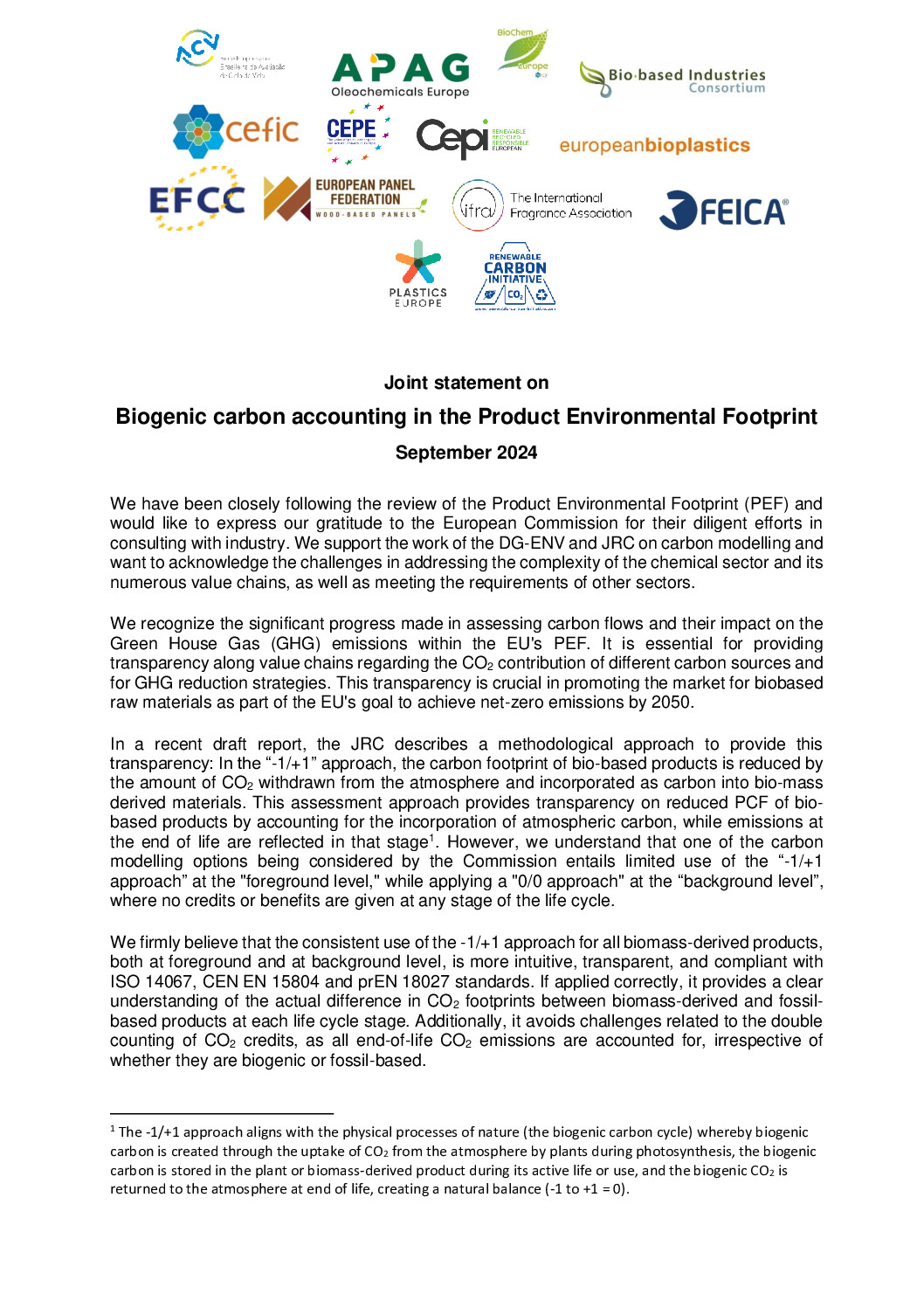We have been closely following the review of the Product Environmental Footprint (PEF) and would like to express our gratitude to the European Commission for their diligent efforts in consulting with industry. We support the work of the DG-ENV and JRC on carbon modelling and want to acknowledge the challenges in addressing the complexity of the chemical sector and its numerous value chains, as well as meeting the requirements of other sectors.
We recognize the significant progress made in assessing carbon flows and their impact on the Green House Gas (GHG) emissions within the EU’s PEF. It is essential for providing transparency along value chains regarding the CO2 contribution of different carbon sources and for GHG reduction strategies. This transparency is crucial in promoting the market for biobased raw materials as part of the EU’s goal to achieve net-zero emissions by 2050.
In a recent draft report, the JRC describes a methodological approach to provide this transparency: In the “-1/+1” approach, the carbon footprint of bio-based products is reduced by the amount of CO2 withdrawn from the atmosphere and incorporated as carbon into bio-mass derived materials. This assessment approach provides transparency on reduced PCF of bio-based products by accounting for the incorporation of atmospheric carbon, while emissions at the end of life are reflected in that stage1. However, we understand that one of the carbon modelling options being considered by the Commission entails limited use of the “-1/+1 approach” at the “foreground level,” while applying a “0/0 approach” at the “background level”, where no credits or benefits are given at any stage of the life cycle.
